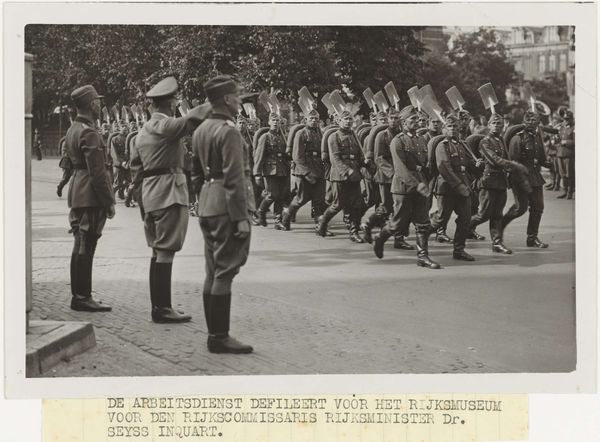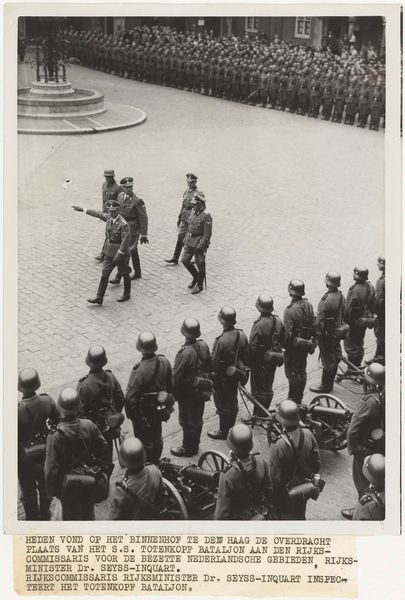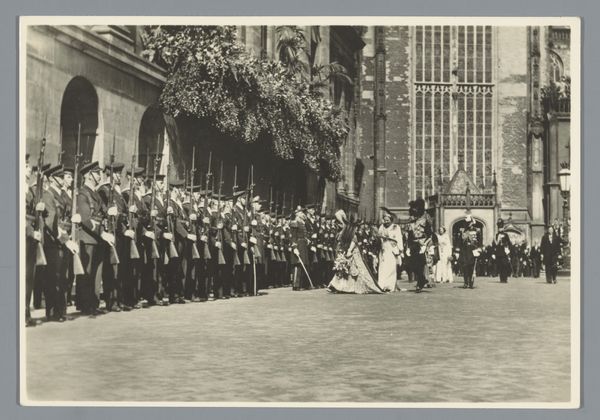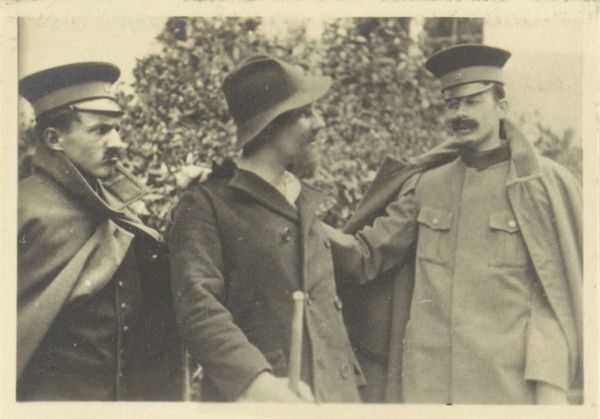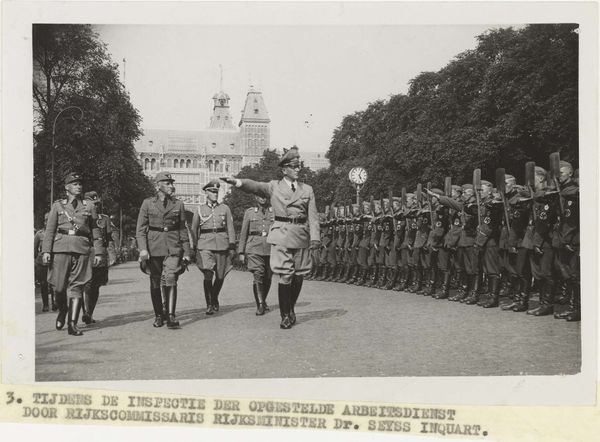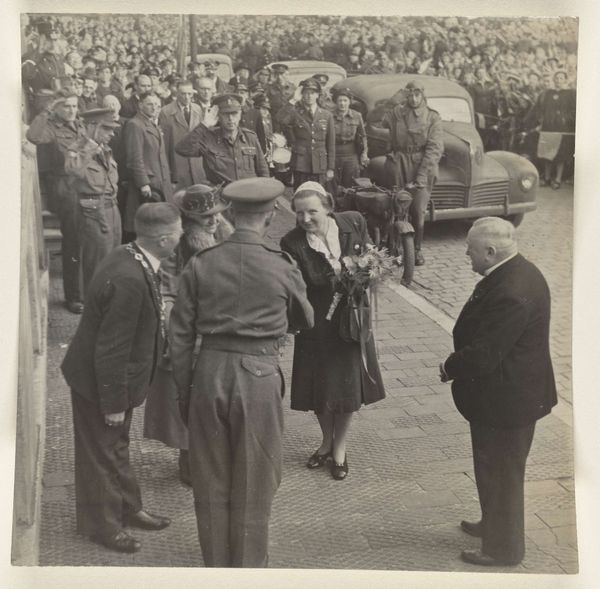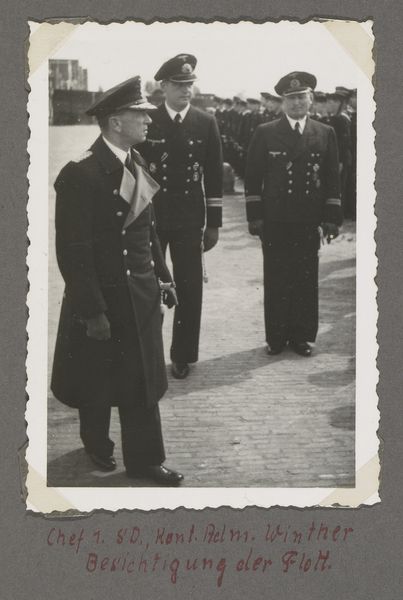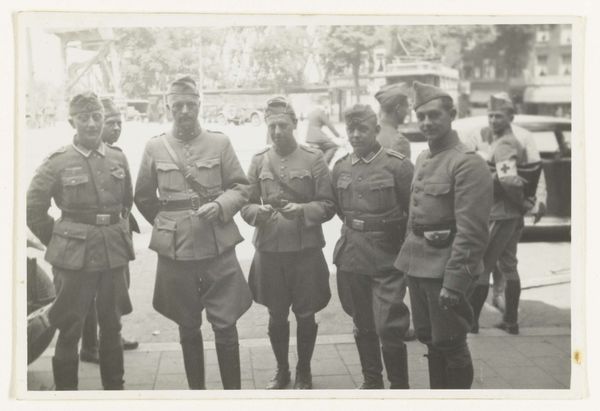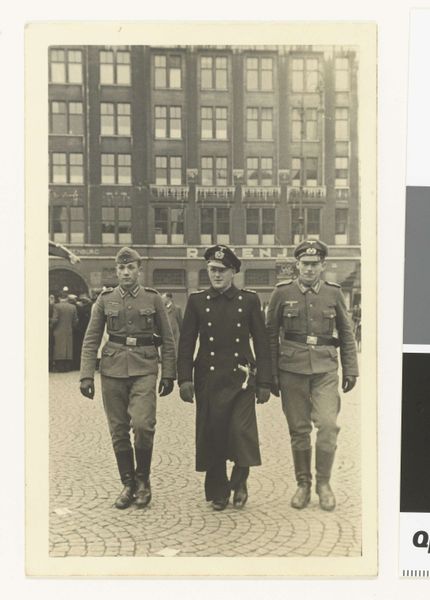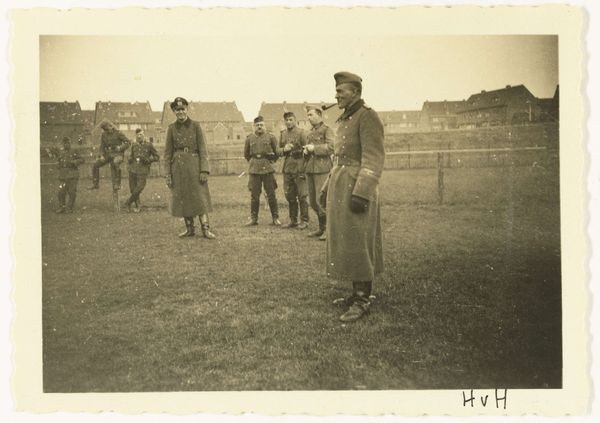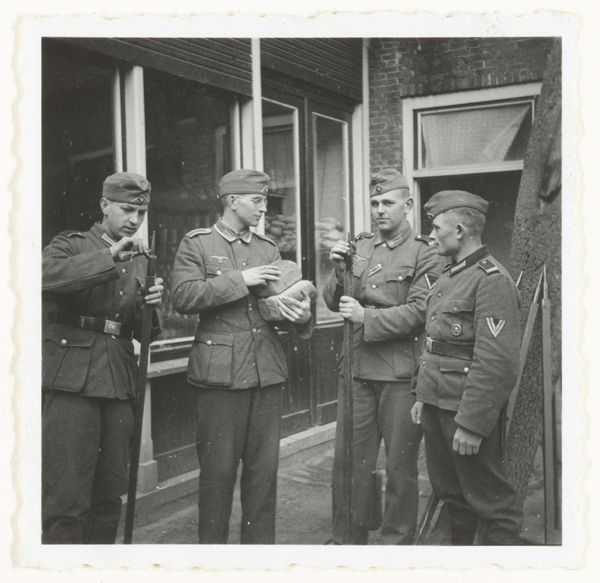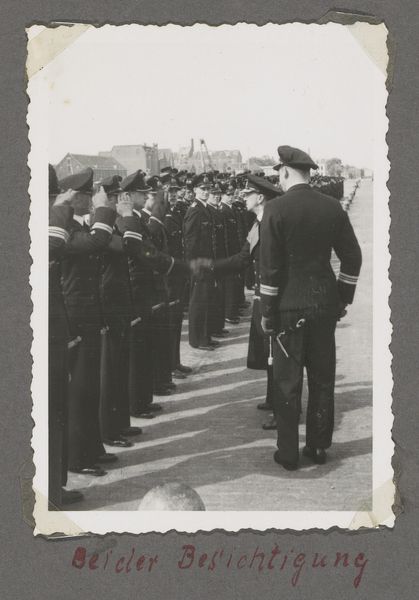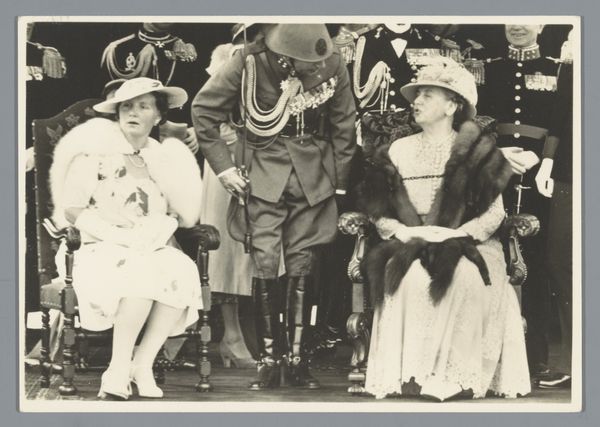
photography, gelatin-silver-print
#
portrait
#
landscape
#
outdoor photograph
#
outdoor photo
#
archive photography
#
photography
#
culture event photography
#
gelatin-silver-print
#
modernism
Dimensions: height 12 cm, width 16.8 cm, height 16 cm, width 22.2 cm
Copyright: Rijks Museum: Open Domain
Curator: This is a gelatin silver print from 1945, taken by the Anefo press agency. It documents Queen Wilhelmina's visit to Oxford University. A compelling historical photograph. Editor: It has a strikingly muted tone. The limited tonal range almost renders the figures as architectural elements, aligning them with the imposing structures that seem to box in the scene. Curator: Precisely. Notice how the composition relies heavily on linear forms – the regimented soldiers, the sharp angles of the buildings – these create a visual rhythm. Consider the dynamic between the verticality of the architecture and the figures in contrast to the horizontal plane created by the parade formation. Editor: Thinking materially, what about the choices inherent in a gelatin silver print? This method captures a reality steeped in contrast. The social impact feels tangible. It renders labor and political dominance as a high art document of modernism. Did it feel like modernist artwork at the time, though? Or was it only capturing what seemed immediately relevant? Curator: A fascinating point. While the gelatin silver printing process became the standard, its ability to record fine detail while simplifying to stark contrasts serves the Modernist aesthetic. The print invites formal scrutiny, especially noting the sharp lines of uniforms juxtaposed against softer details in the Queen's attire. Note how the dark-light areas coalesce around key figures, which offers a structured narrative around them. Editor: Yes, that tonal balance certainly draws the eye to the Queen's location. Her apparel almost communicates regality, even against this austere scene. Still, her symbolic function aside, the material presence feels central; there is so much gray here! How might this affect viewership, then versus now, and does this medium emphasize a political moment versus another method of image capture? Curator: That’s a wonderful thread to pursue. This discussion offers insight into photography's pivotal role in shaping our understanding of both art and history. Editor: I'm left contemplating how its initial utility transcends to the modern-day understanding of "art."
Comments
No comments
Be the first to comment and join the conversation on the ultimate creative platform.
